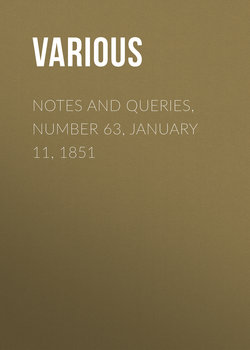Читать книгу Notes and Queries, Number 63, January 11, 1851 - Various - Страница 7
NOTES
MINOR NOTES
ОглавлениеThe Curse of Scotland.—In Vol. i. p. 61., is a Query why the Nine of Diamonds is called the Curse of Scotland. Reference is made to a print dated Oct. 21, 1745, entitled "Briton's Association against the Pope's Bulls," in which the young Pretender is represented attempting to lead across the Tweed a herd of bulls laden with curses, excommunications, indulgences, &c.: on the ground before them lies the Nine of Diamonds. In p. 90. it is said that the "Curse of Scotland" is a corruption of the "Cross of Scotland," and that the allusion is to St. Andrew's cross, which is supposed to resemble the Nine of Diamonds. This explanation is unsatisfactory. The nine resembles St. Andrew's cross less than the five, in a pack of cards; and, moreover, the nine of any other suit would be equally applicable. The true explanation is evidently to be found in the game of Pope Joan, in which the Nine of Diamonds is the pope. The well-known antipapal spirit of the Scottish people caused the pope to be called the Curse of Scotland.
The game of Pope Joan is stated to have been originally called Pope Julio, and to be as old as the reign of Queen Elizabeth. See Sir John Harington's "Treatise on Playe," written about 1597, Nugæ Antiquæ, vol. i. p. 220.
L.
George Herbert.—It is much to be desired that the suggestion thrown out by your correspondent (Vol. ii., p. 460.) may be acted upon. The admirers of George Herbert are doubtless so numerous, that the correct and complete restoration of Bemerton Church might be effected by means of a small subscription among them, as in the case of the Chaucer monument. Most gladly would I aid in the good work.
